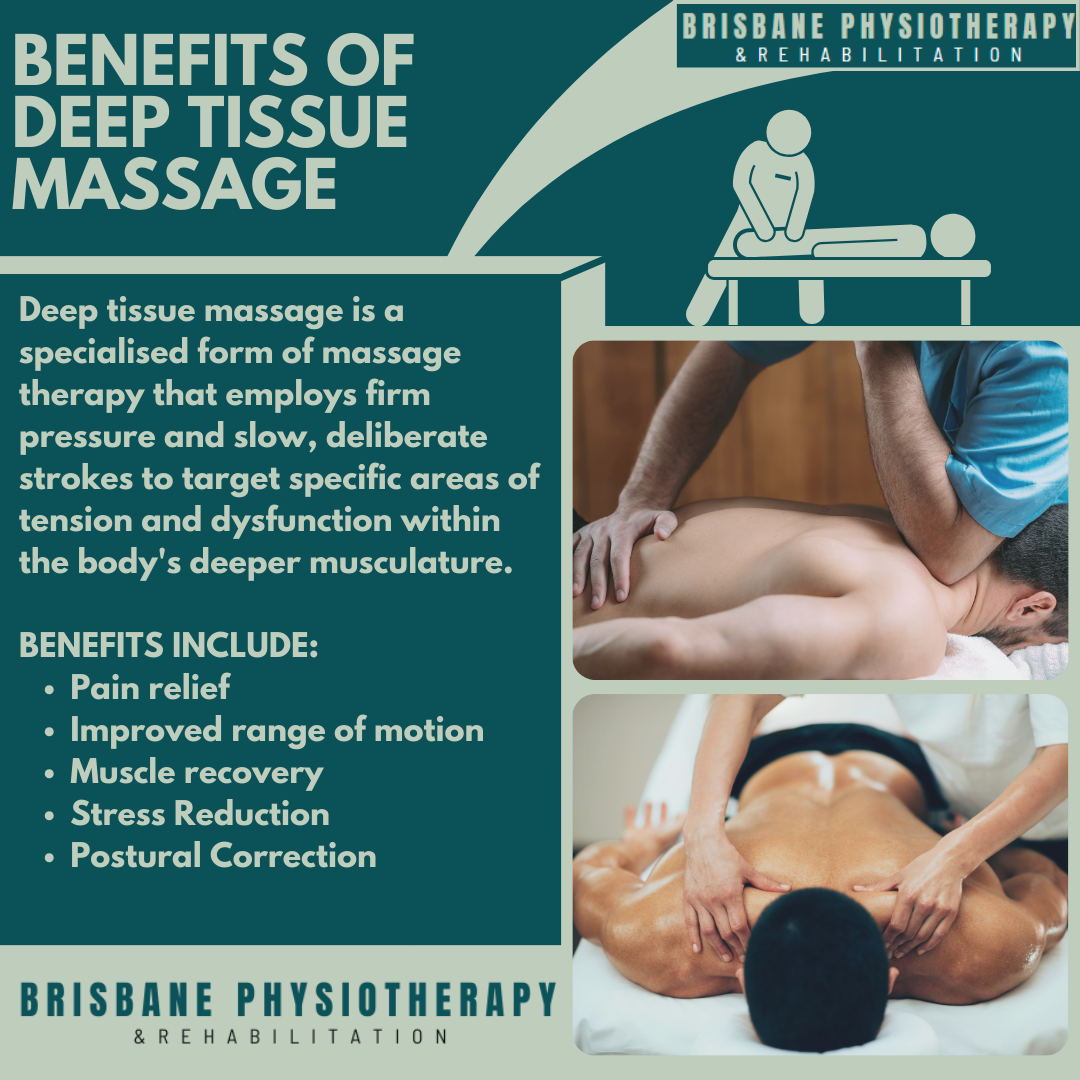Benefits of Deep Tissue Massage:
Introduction:
Deep tissue massage is a specialised form of massage therapy that employs firm pressure and slow, deliberate strokes to target specific areas of tension and dysfunction within the body's deeper musculature. By applying sustained pressure, friction, and stretching techniques, a skilled therapist can release adhesions, break up scar tissue, and promote improved circulation and tissue healing. Unlike gentler forms of massage, deep tissue massage may elicit some discomfort or "good pain" as tight muscles and adhesions are addressed, but the ultimate goal is to facilitate lasting relief and improved function.
Key Benefits of Deep Tissue Massage:
Pain Relief: Deep tissue massage can effectively alleviate chronic muscular pain and tension, including conditions such as low back pain, neck and shoulder tension, and sports-related injuries.
Improved Range of Motion: By targeting adhesions and scar tissue, deep tissue massage can help improve flexibility, mobility, and joint function, allowing for greater freedom of movement.
Muscle Recovery: Athletes and active individuals often turn to deep tissue massage to aid in muscle recovery and prevent overuse injuries by promoting circulation, reducing inflammation, and flushing out metabolic waste products.
Stress Reduction: While deep tissue massage is primarily therapeutic in nature, it also offers the benefit of stress reduction and relaxation, as tense muscles release their grip and the body enters a state of deep relaxation.
Postural Correction: Deep tissue massage can help address muscular imbalances and postural dysfunction by releasing tight muscles and restoring proper alignment, thereby reducing strain on joints and supporting optimal biomechanics.
Techniques Used in Deep Tissue Massage:
Stripping: Also known as "deep stripping" or "deep gliding," this technique involves applying sustained pressure along the length of a muscle or muscle group using the thumbs, knuckles, or forearm.
Friction: Friction techniques involve applying pressure across the grain of muscle fibers to break up adhesions and scar tissue, promoting improved tissue mobility and circulation.
Trigger Point Therapy: Trigger points are hyperirritable spots within muscle tissue that can refer pain to other areas of the body. Trigger point therapy involves applying sustained pressure to these points to release tension and alleviate pain.
Myofascial Release: Myofascial release techniques target the fascial network surrounding muscles and organs, aiming to release restrictions and restore optimal tissue mobility and function.
Cross-Fiber Friction: This technique involves applying pressure perpendicular to the direction of muscle fibers, helping to break up adhesions and scar tissue and promote tissue healing.
Common Misconceptions About Deep Tissue Massage:
Pain Equals Gain: While deep tissue massage may elicit some discomfort, it should never be excessively painful. A skilled therapist will work within your comfort level to achieve therapeutic results without causing undue distress.
It's Only for Athletes: While athletes often benefit from deep tissue massage to aid in recovery and performance, anyone experiencing chronic muscular tension or pain can benefit from this therapy.
It's Just a Stronger Version of Swedish Massage: While both Swedish and deep tissue massage involve hands-on manipulation of soft tissue, they differ in their depth of pressure, techniques used, and therapeutic goals.
It's Only for Acute Conditions: While deep tissue massage can be effective for addressing acute injuries and pain, it is equally valuable for chronic conditions, postural imbalances, and stress-related tension.
It Always Leaves Bruises: While some mild bruising or tenderness may occur, especially in areas of chronic tension or adhesions, excessive bruising is not typical and should be communicated to your therapist.
Conclusion:
Deep tissue massage is a powerful therapeutic modality that offers numerous benefits for relieving pain, promoting muscle recovery, and enhancing overall well-being. Whether you're seeking relief from chronic muscular tension, recovering from injury, or simply looking to optimize your physical health, deep tissue massage can be a valuable tool in your wellness toolkit. If you're considering deep tissue massage as part of your physiotherapy treatment plan, be sure to consult with a qualified therapist who can assess your individual needs and goals and tailor the treatment to address your specific concerns. With the right approach and guidance, deep tissue massage can help unlock lasting relief and restore balance to your body and mind.

